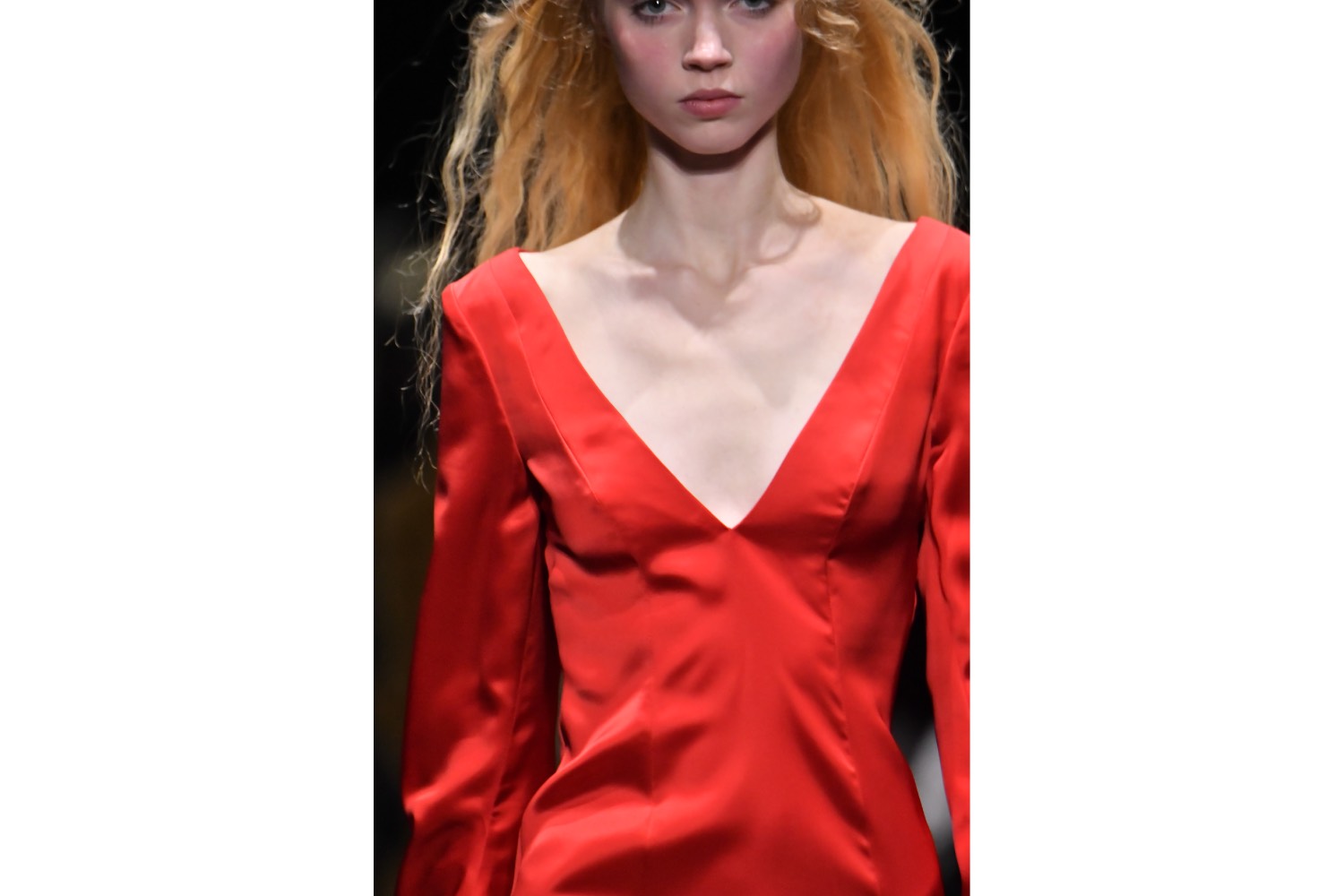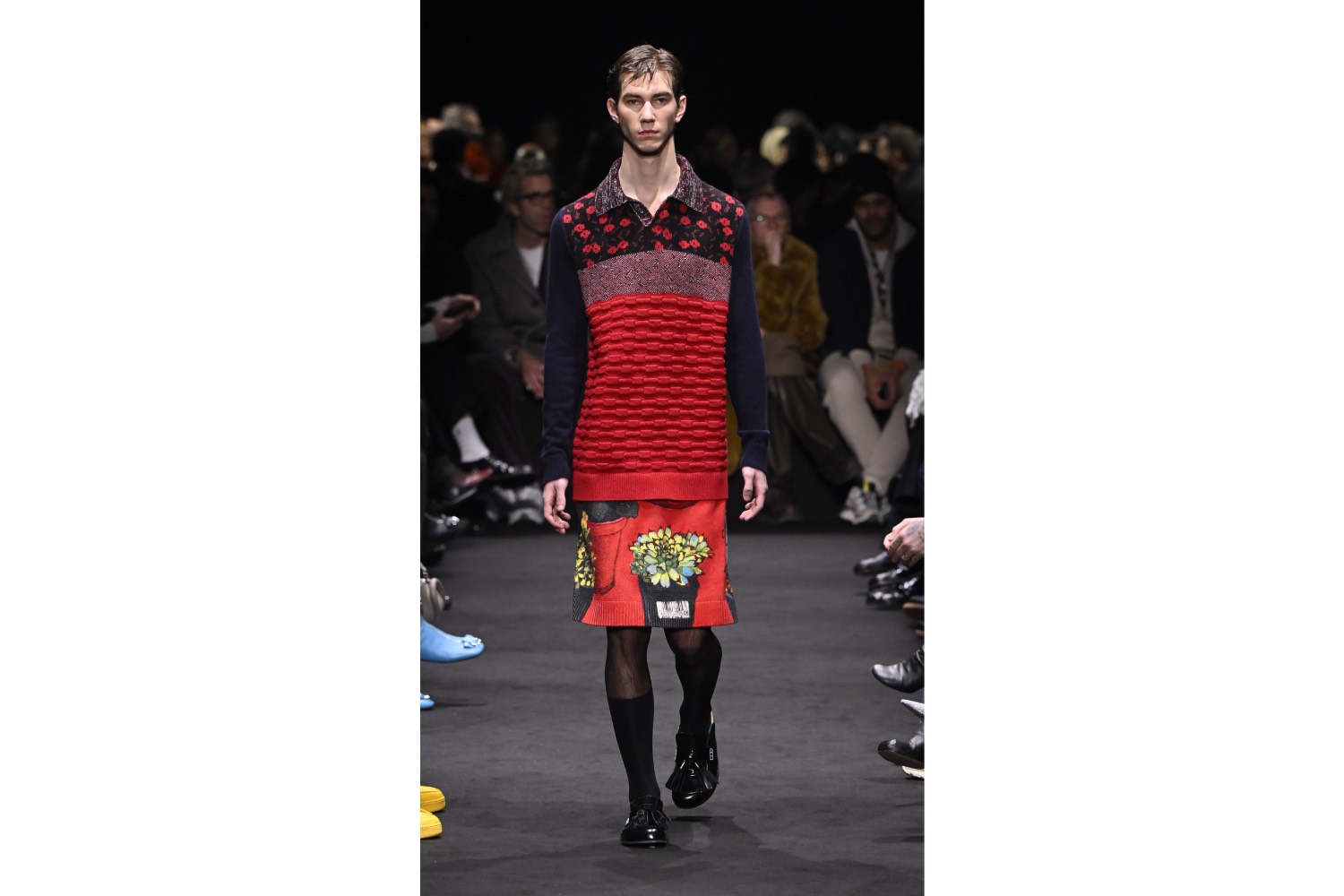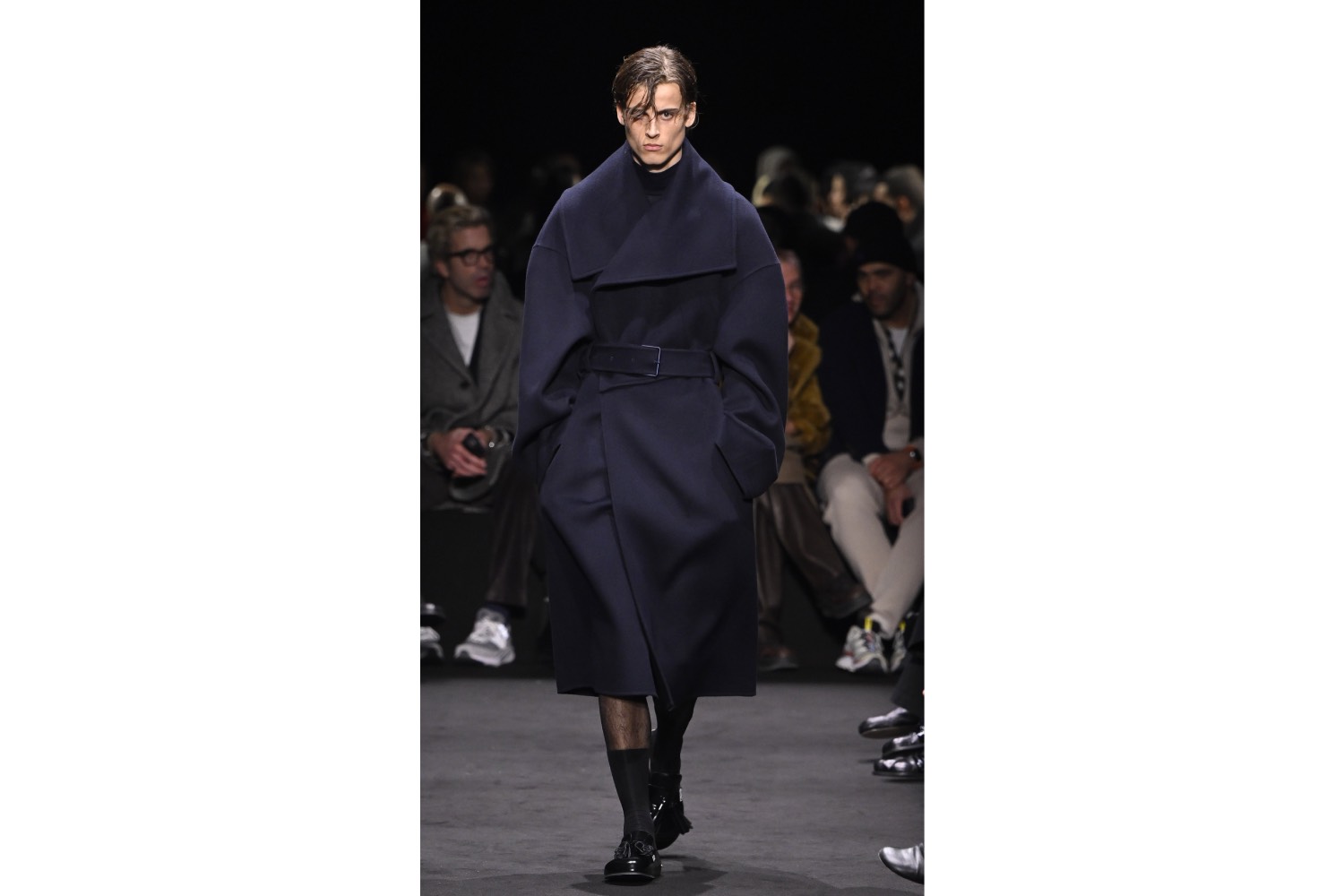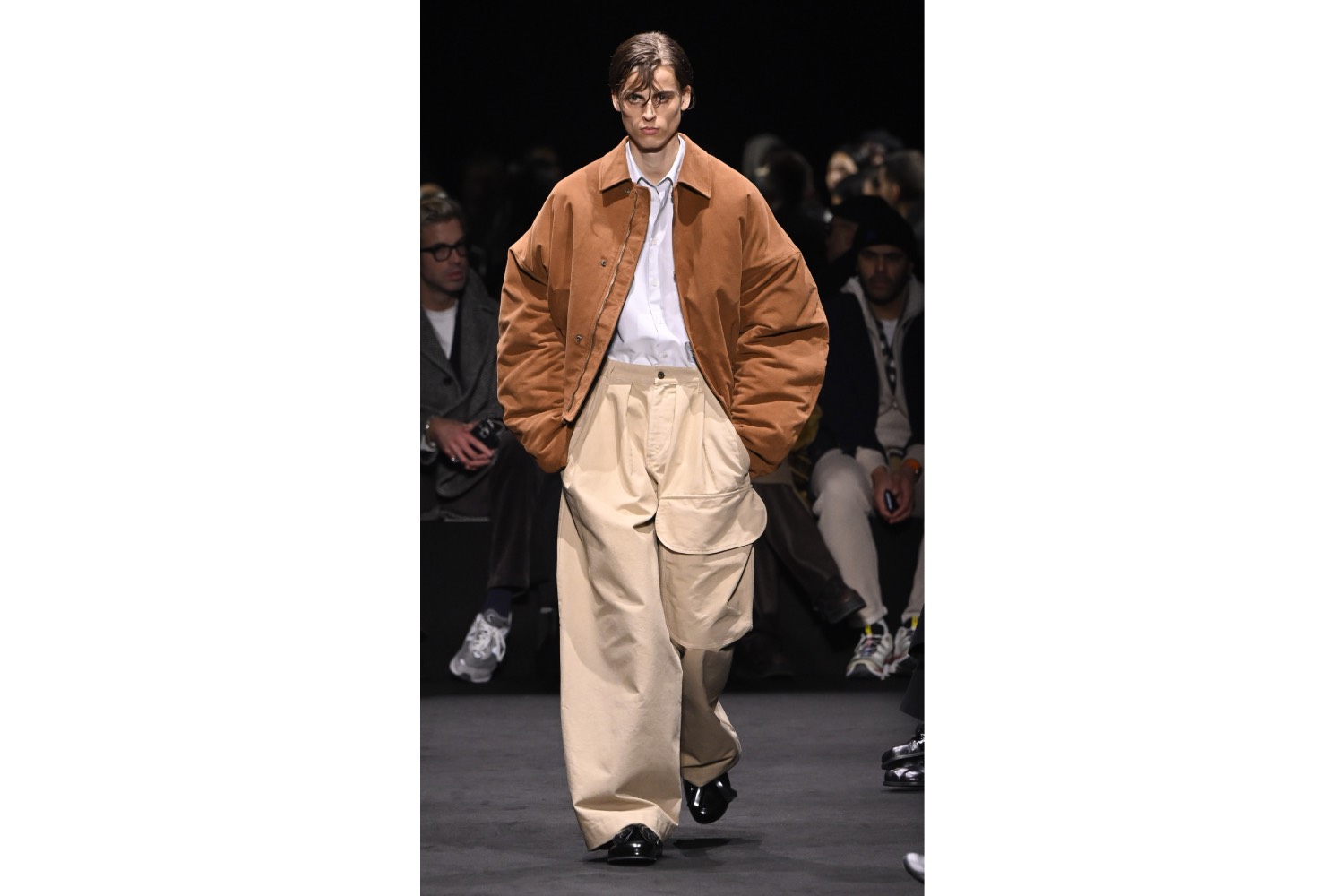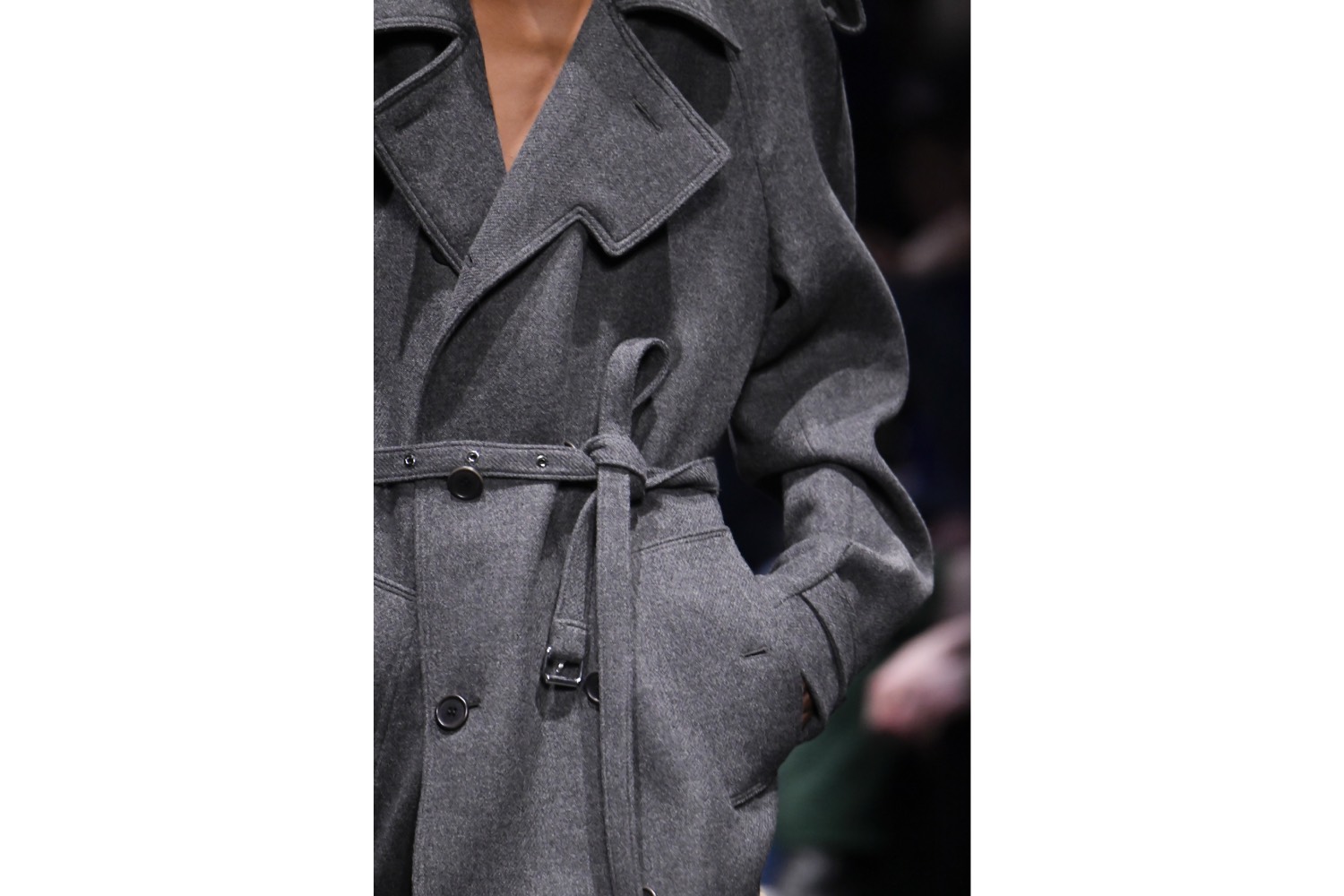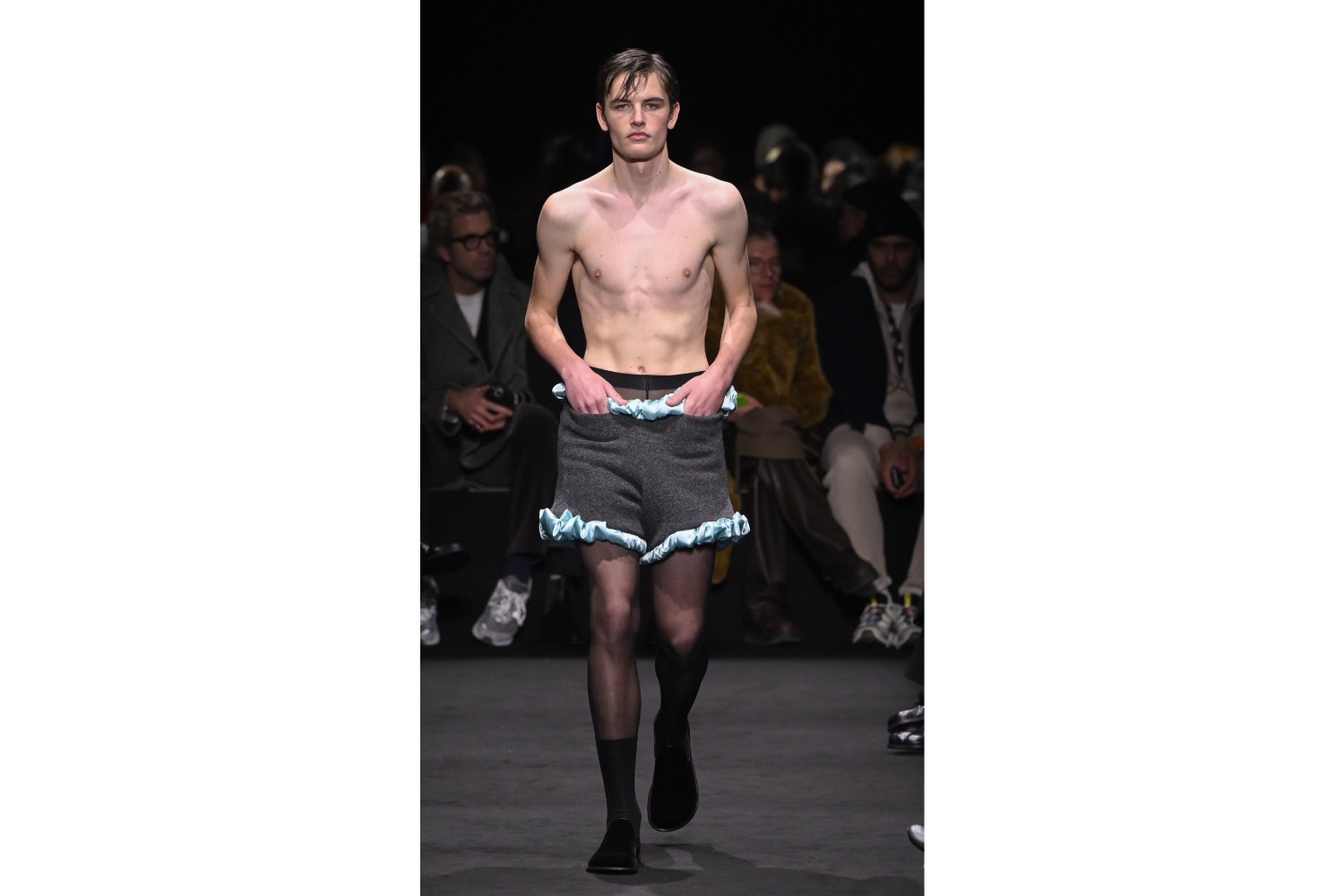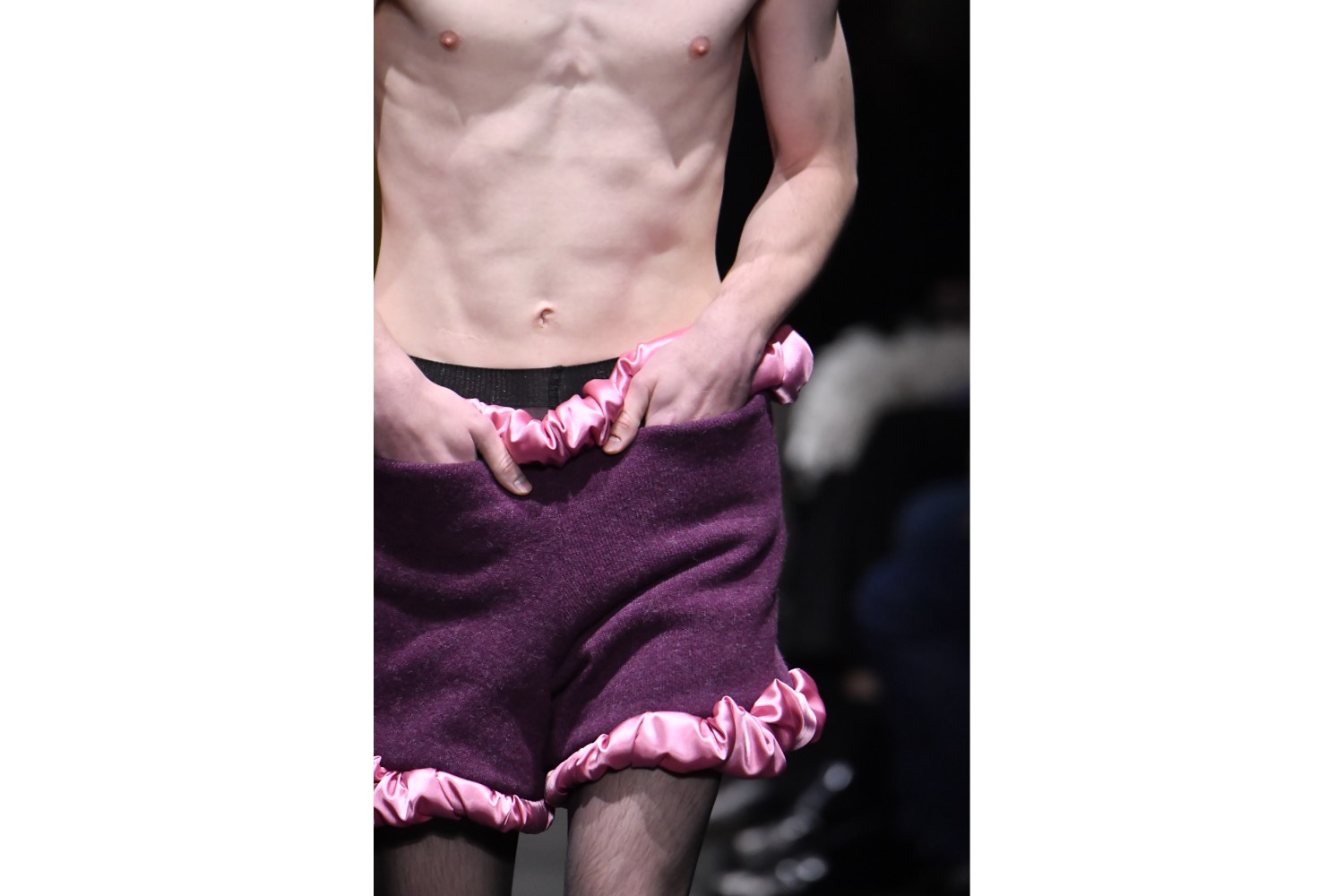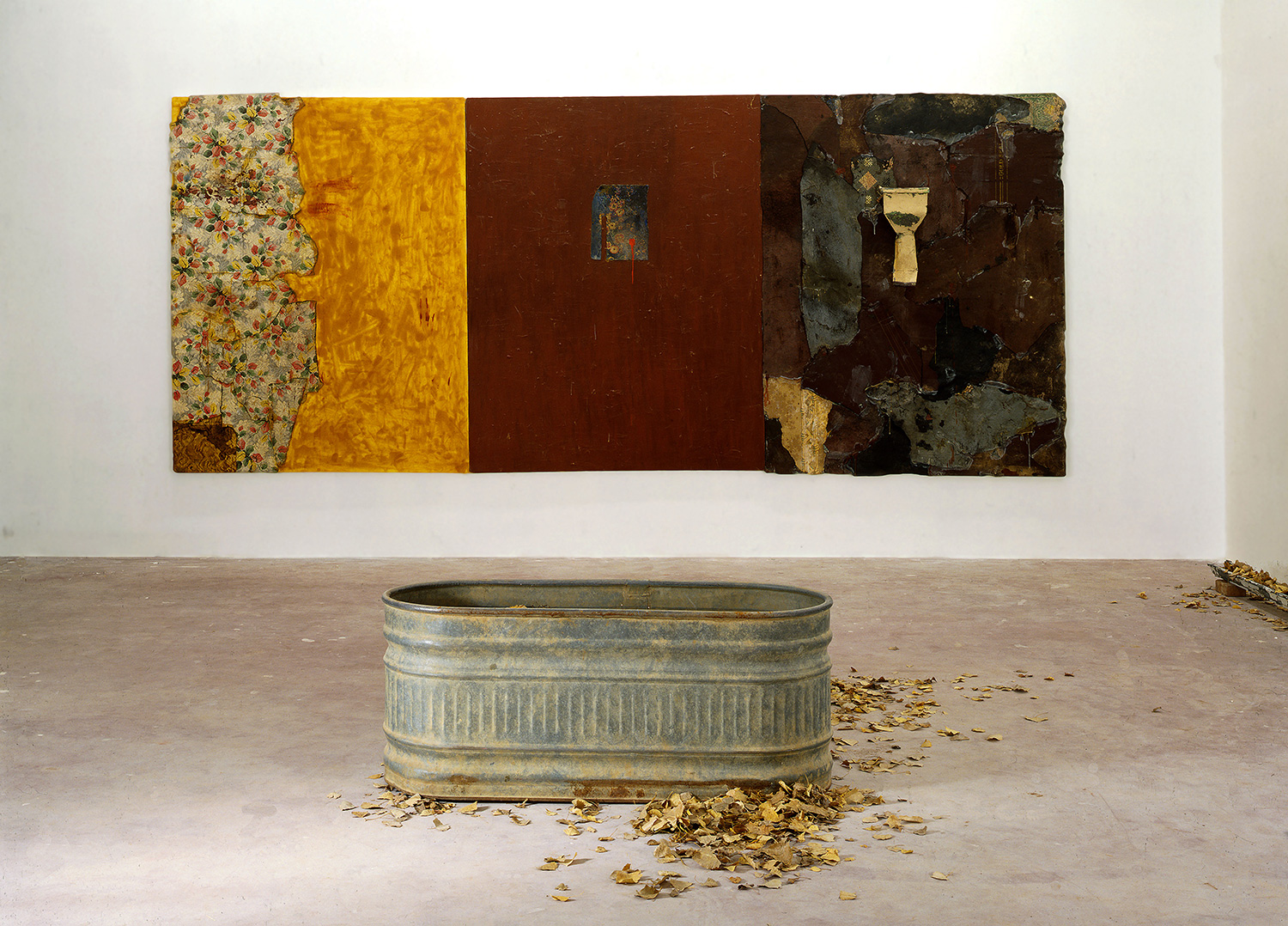A few weeks ago, I went to see JW Anderson’s new fashion show. It was hosted in a municipal leisure center in Paddington, a wealthy but weirdly sleepy part of central-west London: a sports hall for well-heeled grandparents who bought before the prices went crazy, the few council tenants who got a good deal, and the sprinkling of younger city workers who like the area but can’t stomach paying for Equinox.
The clothes were approachable and incredible and presented straight on, with bright light. The vibe was high-feminine cozy, with hints of weirdness lying just under the surface — tweed tops with herringbone thick as a rope; double-breasted coats in brown Prince of Wales check, blown out of proportion; exquisite white dresses cut in almost see-through sheer fabric and styled with slippers; light pink pullovers with a V neck that plunged under the breastbone. There were prim woolen shorties and camisoles — underwear from another era, worn as a full look today. Everything looked borrowed from another time, dressed up and age-shifted: an effect heightened by the fact that some of the models wore gray wigs, complete with hair sliders, despite all being the completely classic model age of, like, twenties max.
Jonathan Anderson often has these little gestures for his shows – eye-catching summations of the collection concept rendered into material form, which stick in the mind and act as a lever for the collection’s narrative. This one felt especially estranging: a way into a collection that balanced the eerie and the homely. There was something perfectly suburban about the collection itself, but not the suburbs of the young and frustrated, those that have been referenced ad nauseam in fashion. Instead, it’s the suburbs of grandparents, of gossip, of neighbors that become an urban myth. Of places where something weird, something wild bubbles unmentioned. It was like looking through net curtains at the new neighbor that just moved in down the road or, more precisely, hearing someone else tell you the story. “Do you know she’s only twenty-six? Jane says she swears her gray hair is a wig.” A stylish woman of twenty-six, dressed up like someone in her seventies. What could she be capable of?
Interior design has become a touchstone of style culture in recent years – blame the pandemic or just millennials growing up to the age where you want nice furniture. But unlike Matthieu Blazy collaborating with Gaetano Pesce at Bottega Veneta or Rick Owens designing his own monumental furniture, Anderson is less interested in the interiors-porn of Instagram as he is in the homes we remember growing up in. Those exquisite white dresses were finished with curtain ties, twisting up from the hem to the hips, pagan and homely all at once. Domesticated clothes for un-domesticable people.
Weirdly, it’s not the only piece of A+ culture that features young women in gray wigs I’ve seen in the last few months — back in November, my fiancée screened this amazing film called Corridor of Mirrors, a British movie from the late 1940s about a woman that has a fling with a charismatic but weird guy who lives in a mansion full of old stuff: hall of Versailles mirrors, old suits of armor, a Renaissance painting he swears he painted in a past life. One of the weirdest things is a former girlfriend, maybe? Who is also the housekeeper in a gray wig. Crazy, brilliant film about how we tell stories about certain “types,” people who are myths to themselves, about what we know about the people around us and what we never mention. It’s also a film, deeply, about things — clothes, interiors, eras, people — and how to love them, use them, without falling in love with them.
Weirdly, Anderson wasn’t the only A+ cultural figure who has made work about “the home” I saw that weekend. Cameron Mesirow, a friend who makes music as Glasser, was performing in town the night before, and in 2013 she made an amazing album called Interiors. To me, it’s an album concept album – about what’s inside, literally, and about how spaces create us, and how we can define ourselves through what surrounds us, and how our hidden sides can be shown to people we want to spend time with, when we invite them in. The album itself is much more big-M modern than JW Anderson’s FW24 collection – it’s more Delirious New York than Last of the Summer Wine, if you like. But it’s incredible all the same.
In a note that she shared around the time of the release of the album, she talks about the way that making music out of a feeling is “trying on the phantom, wearing it as my clothes, possessing it as if it were my own object.” The act of making a piece of art turns into an urge, a secret to yourself, perhaps, into a thing that can be observed by the feeler and felt by another person. It’s a way of domesticating it, almost – as one would domestic a wild animal or a grain one needed to survive.
After the show, and in the show notes, Anderson discussed nostalgia, pushing and pulling around the term – “Instead of nostalgia, colloquialism,” he wrote beforehand, afterward softening to saying, “We are nearly more excited about the idea of nostalgia than we have ever been. Which is not a bad thing. Maybe it’s quite exciting, maybe it’s not so scary.” And it’s obviously a feeling that’s around a lot at the moment, what with, you know, social media, but I don’t really think it’s the exact sense of the show. I mean, sure, there’s big granny pants and slippers. But instead of the general act of wishing for the past, of reveling in the warm milky tea of old stories, this is a collection about the act of remembering or looking back rather than simply looking back. It’s not about our actual grandparents; it’s about the stories we tell about them and their weird neighbors, and the weirdness just behind the doors of those nice British cul-de-sacs. It’s actually not an eerie show, but it does know what unheimlich means. The heroine of Corridor of Mirrors is the woman who visits the house full of old stuff, takes what she wants, and leaves.



